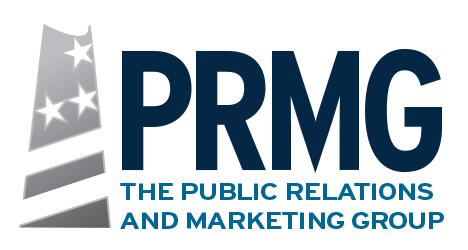Maintaining an active blog can establish your organization as a leader in your industry, change your website from an online brochure to an interactive hub of information and give your customers a way to engage with you. Because blogs are less formal than a company website, and more interactive, they provide a forum for businesses to provide useful information, rather than just company promotion, and build their reputation and credibility among customers.
This article will provide you with the benefits of blogging, advice on how to begin blogging and five essential blogging tips for your business.
Benefits of Blogging — Successful blogs can demonstrate your expertise and leadership in your industry, attract the attention of your audience and secure leads for your business. Creating and maintaining a blog for your business will dramatically improve your content creation, boost your reputation and improve your search engine optimization (SEO).
-
Content Creation — It has never been more important for businesses to generate quality content on a regular basis. The quality of your content is what influences your audience’s decision on whether or not to invest their time into reading your website or blog, and ultimately whether to trust your company and give it their business. Blogs are the perfect venues to distribute and store your content. Your blog should house informative, thought-provoking content that is related to your industry or the problem that your business solves for your audience. Very often, a blog will become your content hub of information. To learn more about the importance of content creation, please read our article, “Why Quality Content Reigns Supreme.”
-
Build Your Reputation — While your business’ website should focus on the products or services your business offers, your blog should demonstrate your organization’s knowledge and expertise in this area. By providing your audience with valuable content and helpful articles, your business will gain credibility and trust among existing and potential customers.
-
Search Engine Optimization (SEO) Benefits — Blogging can dramatically improve your search engine rankings. Search engines place heavy emphasis on new, current and quality content, so blogs are given high authority.
How to Begin Blogging — Before you jump into the blogosphere, it’s important to spend some time researching and browsing through other blogs in your industry. Once you’re comfortable with how blogs work, you should first establish a clear objective and target audience. Ask yourself the following questions: Is my target audience likely to engage in blogs? What content would my audience find most valuable? What type of information, and multimedia, is my audience looking for? To be able to answer these questions, it’s important to be able to put yourself into the mindset of your current or potential customers.
When you’re ready to begin, we recommend incorporating your blog into your main website, instead of giving it its own URL. Especially to those who are new to Web marketing, this is the easiest way to begin. Another factor to consider, when choosing whether or not to incorporate your blog, is that many people don’t have the time to develop content for and market more than one website. Incorporating your blog into your business’ main site will provide it with fresh content, as well as search engine optimization benefits.
The most successful blogs are updated weekly, at least, with fresh and interesting content related to their industry. You may choose to blog about news in your business area, company updates, helpful and “how-to” articles and other content that may be valuable to your audience. Remember to include relevant tags with each entry so that your posts can be easily categorized and found on the Web.
5 Essential Blogging Tips — To make sure your business’ blog is as successful as it can be, follow these five essential tips:
-
Incorporate Multimedia — It’s essential to add some form of multimedia to each blog entry to make your content interesting and visually appealing. By adding a photo, graphic or video to your post, you’ll appeal to a greater audience, since everyone takes in information differently. Some people are visual learners and will be far more receptive to your blog if it incorporates more than just text.
-
Add Sharing Icons — Including social media and social bookmarking icons on your blog is a great way to enable sharing. With sharing icons present next to each blog post, readers can easily share the entry with their friends or on their own social media profiles. It’s important to include the following sharing icons: Facebook’s “Like” button, Twitter, the Google+ “+1” button, StumbleUpon, Digg, Delicious and the option to email the blog entry to a friend. Please follow each hyperlink for more information and to learn how to enable each of these sharing features on your blog. When done properly, this will definitely boost your blog’s traffic.
-
Include Hyperlinks — Wherever possible, it’s important to include hyperlinks that lead to more specific information. For example, find keywords in your blog posts and link them to another article you may have written on the topic or a section of your company’s website that offers more information on this topic or services you may offer.
-
Encourage Feedback — You want your blog to be as interactive as possible. It’s important to include a call to action in your blog posts and it could be something as simple as, “What are your thoughts? Share your opinion in the comment section below!” You should also include your contact information at the end of a blog post, should they have any questions or require more information. Remember to regularly scan your comments to remove any spam and reply to any questions, comments or concerns in a timely and helpful manner.
-
Promote on Social Media — With the powerful sharing capabilities of social media sites, your business’ social media profiles are perfect venues for promoting your blog. Whenever you update your blog, make sure to notify your Facebook fans, Twitterfollowers and Google+ circles. After you write your blog entry, use these sharing icons to “tweet,” share on your Facebook fan page, add to your social bookmarking profiles and more. In your social media updates, include a “teaser,” such as a portion of your blog entry, with the title, and encourage people to follow the link to read the rest of your post.
For more information, please contact The Public Relations and Marketing Group at (631) 207-1057 or johnzaher@theprmg.com. You can also visit our blog for more valuable articles, advertising spotlights and more.


 The Web can be a great place to showcase your product or service and get out your message directly to your customers. However, with the evolution of the Web into a crowded marketplace, being found easily by your target audience can often be a challenge. By strengthening your online presence and improving your rankings in search engines, you can enable consumers and media to find you at the precise moment that they are looking for information or need a particular product or service that you can provide.
The Web can be a great place to showcase your product or service and get out your message directly to your customers. However, with the evolution of the Web into a crowded marketplace, being found easily by your target audience can often be a challenge. By strengthening your online presence and improving your rankings in search engines, you can enable consumers and media to find you at the precise moment that they are looking for information or need a particular product or service that you can provide.


